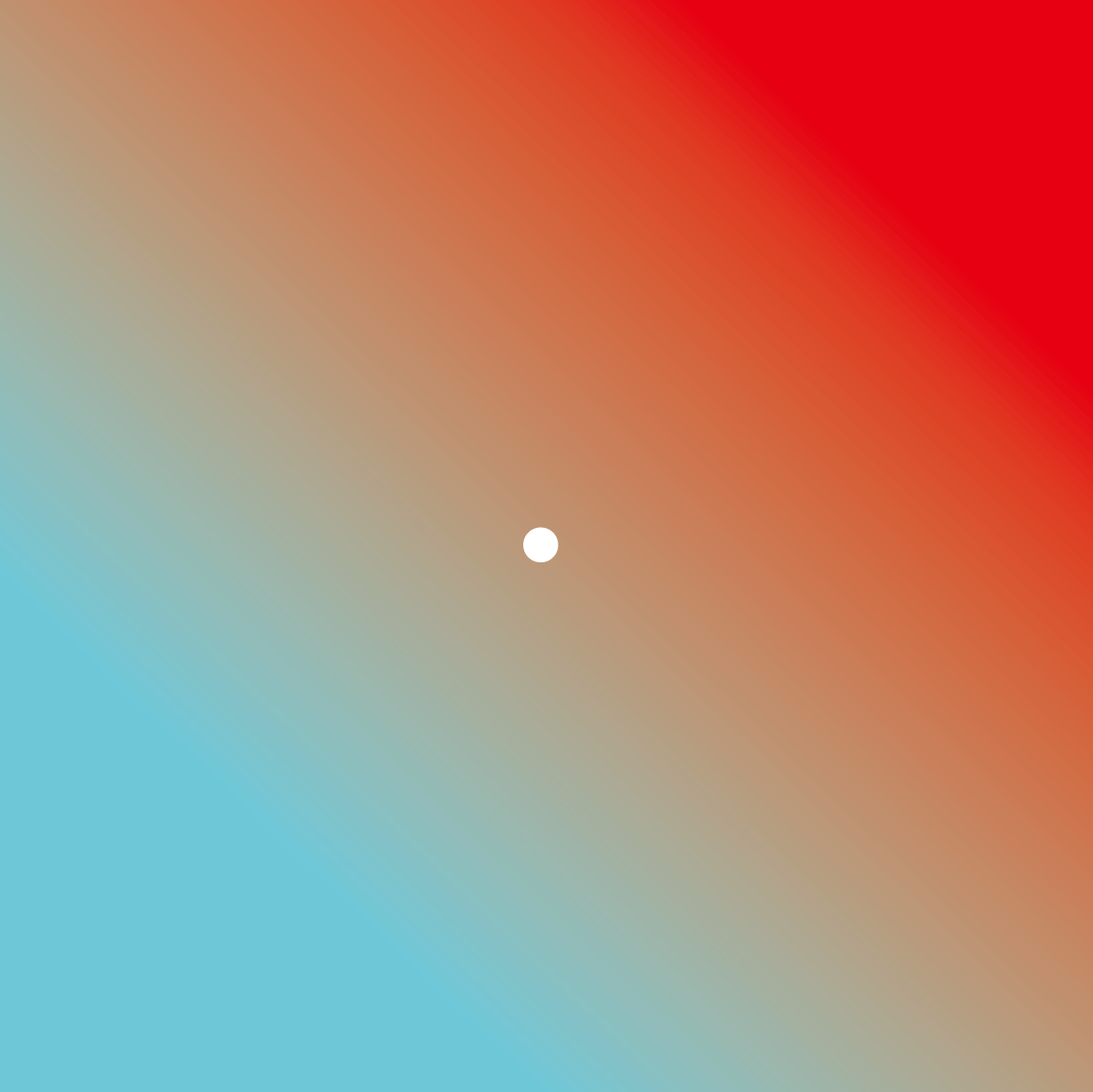
本文系用户投稿,不代表机核网观点
⚠️ 未经作者授权 禁止转载
看到标题中的“控制论”和“文化作品”而点进来的朋友,阅读前可以先思考一下自己对这两个词语的刻板印象。因为本文讨论的问题既不科幻也与美无关,反而极其现实而具体,甚至有些晦涩枯燥。
本文《The Work of Culture in the Age of Cybernetic Systems》发表于1988年,作者是美国电影理论家Bill Nichols。文章最初吸引我的点,在于它对信息产业催生的新文化作品形式的论述,恰好填补了我思维中的某块空缺。读罢之后,我发现其中的诸多段落,在如今仍然具有生命力。尤其是关于基因工程、信息产业和电子游戏的相关法律权利的部分。
于是我索性边读边翻译,顺便分享出来。由于篇幅过长,因此拆为上下两篇。
阅读提示:
本文涉及女权主义电影理论、法兰克福学派、控制论、知识产权法、遗传学、太空武器(里根时期)和早期电子游戏等领域。有相关知识背景的朋友,阅读时的障碍可能会更小。没有的话也不必害怕,毕竟我也是现学现卖。水平所限,文中出现的各学科相关术语和表述,我不确定都采用了约定俗成的正确译法。翻译如有错漏,请相关专业的朋友务必指出,在此提前感谢。
此外,本文的讨论涉及一些经典的“友尽”话题,希望大家理性讨论。
控制论系统时代的文化作品
控制论系统时代的文化作品
作者:Bill Nichols
计算机不仅是一种物体,还是一种符号和隐喻。它暗示着一种新方法,用以思考我们自身和周遭环境,并且用新的方式构建了人类和生活在类人世界中的意义。控制论系统(cybernetic system)包括一整套展现出计算能力的机器和设备,其中包含了一种动态的、有限的智能。电话网络、通信卫星、雷达系统、可编程光盘、机器人、生物基因工程细胞、火箭制导系统、可视图文网络——这一切所都表现出处理信息与执行动作的能力。它们都是“控制论的(cybernetic)”自我调节(self‐regulating)的机制或系统,被预定义(predefined)及其任务所限定。正如摄影机已成为整个摄影和电影过程的象征一样,计算机已成为整个网络、系统和设备的象征——它们是控制论或“自动化但智能(automated but intelligent)”性能的典型案例。
本文章涉及瓦尔特·本雅明(Walter Benjamin)先前的研究领域,这体现在他最著名的文章,1936年发表的《机械复制时代的艺术作品》之中。确切的讲,我的意图在于推进本雅明的研究,并且考察正在发生的一系列转变:以计算机为象征的控制论系统,如何表现为关于自我与现实的概念和关系?这种程度的转变曾经发生在机械复制和摄影机的象征之中。其中包含的深层矛盾心理构成了我们的想象,而这必然会使我的论述同样充满矛盾。
面对这种情况,我不会考察本雅明时代的旧情况,而是会转向那些新生的人工智能系统(system of artificial intelligence)。毫无疑问的是,这种矛盾心理也贯穿着本雅明的全文,在好的情况下它是辩证的,但在最坏的情况下则自相矛盾。乐观地讲,我们用来测试与衡量自己身份界限的那些系统,需要直面质疑与启示的双重阐释。同时我们必须承认悲观的一面,目前占主导地位的仍是对控制的追求,以潜藏的集体主义倾向[1]。控制对集体的支配可以淋漓尽致的展现在对法律的分析之中。
总之,我想做的是回顾本雅明文章中的几个要点,通过对比控制论系统与机械复制的特点,建立一个理解控制论系统的核心隐喻,然后考察该隐喻如何获得了实际的力量——不同的机构如何使自身实践合法化,并重新校准其基本逻辑:它们如何按照隐喻调整自己的形象?我尤其想问的是,控制论设想如何在法律等领域获得制度合法性?
与其他案例一样,其中包含着一种张力,它存在于控制论设想的解放潜力与保持既有社会关系形式的意识形态倾向之间。我认为文化极其重要,因此我将专注于文化作品(它的过程、操作和程序)。我还将文本和实践、艺术和行动囊括其中,因为它们具体体现了既有关系与主要生产方式的存在前提,以及被其维持的各种生产关系。语言、话语和消息(message)是核心,风格和修辞是基础。围绕每一个“事实”和每一个“数据”、围绕所有的现实和证据、围绕所有的“在那里”,一种有说服力的、饱含感情的话语组织正逐渐形成。表意组织被安排在话语构型和制度领域之中,冲突和符号化正是由此产生。
一、机械复制与电影文化
一、机械复制与电影文化
本雅明提出了互相对应的三种转变:经济生产方式、艺术本质和感知方式。工业社会的基础是流水线和大规模生产,技术创新使其延伸到艺术领域,导致从传统的仪式(或“崇拜”)价值中分离出一种新的、独特的市场(或“展览”)价值。这种转变也剥夺了艺术的“灵韵(aura)”。本雅明用“灵韵”来表示艺术的本真性,它依附于传统领域:
事物的本真性是这样一种本质:它在最初就具有可传递性,贯穿其实质持续时间以及它对其所经历史的见证。 [2]
我们无法不去关注对象所具有的灵韵。无论是艺术品还是自然景观,我们都在一处且只能在此处面对它。我们在那个地方,对那个对象,在对其独特性的凝视中行使仪式,并发现了它的使用价值。无论是自然的还是历史的、无生命的还是人类的,拥有灵韵的对象都让我们着迷,就好像它具有“回归原初的力量”。[3]
根据本雅明的定义,机械复制无法复现本真性。这一特点对艺术作品产生了关键影响。“机械复制将艺术作品从对仪式的寄生依赖中解放出来。”(224页)仪式中的旧基础让位于政治艺术的新基础。在群众和群众运动的政治之中,法西斯主义显示了无处不在的危险,对本雅明来说尤其如此。彻底解放的可能性被围绕机械复制手段建立的经济体系所制约,这在电影中尤其明显:“幻觉产生的奇观和怀疑”(23页)使我们偏离了摄影机本来导向的“无意识”,而这种无意识本该揭示那些被我们的眼睛忽略的交互形式:
我们对伸手去拿打火机或勺子的动作习以为常,然而却几乎不知道手和金属之间发生了什么,更别提这如何被我们的情绪波动所影响了。而在电影中,摄影机以多种动作进行干预:拉低与抬升、阐释与孤立、延展与加速、放大与缩小。(237页)
没有灵韵的对象是神秘感的替代物。本雅明在一段有先见之明的精彩段落中,阐述了当民主国家遇到法西斯主义危机时,政治实践如何促成演员角色的异变。机械复制让演员和政治家拥有无限的观众,而非只局限在舞台或者议会。“虽然两者的目的可能不同,但这种变化同样影响着演员和统治者。......这导致了面对(机械复制的)设备的新选拔机制,明星和独裁者在此高歌凯旋”(247页).
以神秘代替灵韵正是本雅明提出的第三种转变:即感知方式的变化。电影或摄影能否被称为一门艺术的问题是次要的。首要问题是艺术本身是否在形式和功能上发生了根本性的转变?艺术本质的根本变化意味着我们看待世界的方式也发生了变化:“在漫长的历史中,人类感官的感知方式随着人类的整体存在方式而变化”(222页)。
机械复制能拷贝可见的物体,如绘画、山脉,甚至是人类。而在此之前,这些物体一直被认为是独一无二、不可替代的。机械复制将工业革命的剧变推向高潮,无处不在的复制品是工业资本主义(industrial capitalism)产物的外在表现。如果要观察和认识机械复制产生的变化的性质与程度,就必须考察这些复制品。
什么电影元素能最有力地证明机器时代的新型感知?那就是“通过地点和焦点的变化周期性地冲击观众”。对于本雅明来说,该元素最能实现达达主义的愿景。电影通过蒙太奇或剪辑来实现这种效果。按照特定的顺序,蒙太奇将事物从原位扯走,并以持续变换的组合方式将其重新组装。再无可能只通过单幅画面引发沉思。蒙太奇使拼贴的潜力倍增,它把两种现实在同一个平面上结合,但显然无法使它们适应无限现实的并置。正如乔治·巴塔耶(George Bataille)所宣称的“越界并不否定封锁,它超越并补完了后者。”本着这种精神,蒙太奇完成且超越了达达主义者的计划,它决定有意识地将灵韵从以下两者中去除:艺术作品以及喜欢将不同文化的文物奇怪并置的早期法国民族志学家的著作。
蒙太奇蕴含的解放潜力将艺术从仪式推向政治参与的舞台。蒙太奇还为工人阶级带来一种视角:世界是可塑的。本雅明写道:
人需要让自己暴露在震颤体验中,这能帮助他适应那些威胁自身的转变。电影符合统觉*器官的深刻转变——大城市街头的行人在个人层面上经历的变化,也是每个现代公民在历史层面上经历的变化。(250页)
*统觉(apperception):指知觉内容和倾向蕴含着人们已有的经验、知识、兴趣、态度,因而不再限于对事物个别属性的感知。
对周遭事物的特写、关注隐藏的细节和熟悉的物体,以及在相机的巧妙引导下探索平凡的环境,电影通过以上手段一方面帮助我们理解那些支配我们生活的必然之物;另一方面,它设法使我们相信存在一个无限且意外的行动领域。我们的小酒馆和大都市街道、办公室和摆满家具的房间、火车站和我们的工厂……这些似乎都将我们绝望地关起来。然后,电影来了!在十分之一秒的时间里,这个监狱世界被炸得四分五裂。现在,我们在它广布的废墟和残骸中,平静而冒险地旅行。(第236页)
尽管机械复制牵扯到对原件的挪用,但是在电影中甚至原件的概念都消失了:安排对象出镜只是为了拍摄。这种挪用过程产生了一系列词汇:用于“拍摄(shoot)”一个场景的“取景(take)”或“摄影机拍摄(camera shot)”;停止拍摄(卡!)和剪辑都被称为“cut”。在本雅明看来,如果要接受机械复制时代,就必须接受物质世界及其意义的剧烈重组带来的冲击效果。爆发性(the explosive)——由本雅明描述并被布莱希特颂扬的暴力性潜力——是主流电影必须抑制、化解和遏制的东西。而计算机及其控制论系统蕴含的爆发性潜力,既然能用于消除辛苦劳作、用于促进集体性、用于亲和力、互连性、系统性网络和共同决策,也就必须被用来遏制并化解信息产业的企图:将这些潜在的民主化权力局部化、浓缩并巩固为控制等级。
蒙太奇——将异质联系起来以震撼观众的洞察力——成为本雅明在技术时代进行艺术创作的主要原则。[4]
对本雅明来说,发展新的观看方式并使其成为常态不只是一种意识形态,而是实在的变革。它们不是旧习俗而是新习惯。这种观看方式之所以成为难以习得的技能,正是因为其与现有意识形态的对立。“历史转折点”的任务摆在面前,但我们无法通过沉思来完成它。而是通过“……在实体感觉占用的引导下,变成习惯,逐渐被掌握”(第240页)。适应威胁性转变所需的冲击,其自身可能会被文化产业自身生产的景观所吸收。在本雅明看来,唯一的解决办法就是使用他自己采用的那些技能:训练一种感觉的新习惯,用来分解和重建现实,或者缓解浪荡子罪恶感的写作风格;这种习惯是工人阶级的:不仅被训练以生产和复制现有的生产关系,而是以一种新的解放形式进行再生产。“将文化及其规范(美、真理和现实)视为人为的安排。容许对其进行超现实主义分析,并且与其他可能的倾向进行比较。”这是超现实主义者的优势,也是革命者的优势。[5]
当转变所孕育的新习惯与新视野受到威胁,并被具有征服潜力的既有社会组织形式还原时。那些提议新社会组织形式的新观看方式,将变得自相矛盾或充满辩证。但是这一转变过程没有回头路,它在电子传播和计算文化中产生的影响,远甚于在机械复制文化(这种文化之于今日好比传统之于本雅明时代)中的影响。
那么我们可能会问,电子计算和数字通信这些新手段如何调校我们的“现实感”?这些技术变革在将新文化形式引入生产关系的同时,是否通过“新的冲击”使我们摆脱了对既有社会关系和文化形式与生俱来(或永恒)的认同?如今的信息社会“加工”而非“生产”基本经济资源(资源是工业资本主义的,已经处于垄断集中的“晚期”阶段),而我们对这种状态越来越熟悉。控制论系统是否改变了我们对那些具备解放潜力的世界的看法?例如,资本主义经济结构经历着技术变革中的当代转型,那么是否可以想象一种新的感知方式:一种更去个体化、更公共的、类似于带有面对面仪式和灵韵的感知形式?
以上哪个议题被匿名电路和直接接触的模拟所影响?如今的蒙太奇在以下两种情况中是否具有等效性:交互式模拟和被预定义约束的模拟交互体验。后现代主义时期的艺术作品能否唤起(仅仅是可能)对后工业社会“深层结构”的感知?这能否与机械复制在与工业资本主义时代所引起的感知发现相媲美?
二、控制论系统和电子文化
二、控制论系统和电子文化
通过列出早期企业资本主义、垄断资本主义和跨国/后工业资本主义相关的一些特征,我们可以将本雅明的论点(在这里粗略地总结一下)置于另一个角度。
拟象(simulacra)揭示了一个核心问题:对信息的控制如何转向对感官体验、演绎、智力和知识的控制。模拟的权力来到了控制论的核心。它将模拟假设为想象中的他者(imaginary Other),并以其作为判断我们身份的标准。这一过程引发了和先前情况(机械复制时代)相同的强烈矛盾心理:用永远无法成为自身一部分的事物来保障身份。
在早期资本主义中,人类的定义和动物世界有关——那里唤起迷恋与吸引、排斥与怨恨。人类与所有其他动物相似但又不同。在垄断资本主义中,人类的定义与机器世界相关——那里唤起独特的矛盾融合。人类机器与所有其他机器相似但又不同。在后工业资本主义中,人类的定义与控制论系统有关——计算机、生物基因工程生物、生态系统、专家系统、机器人和半机械人——所有这些都唤起了上文提到的矛盾心理。人类这种赛博格与所有其他赛博格相似但又不同。
虽然经历了这些转变,但是差异问题仍然存在。人类身份仍然充满危机,随时会改变,且极易受到挑战和篡改。因为想象中的他者所引发的隐喻也在发生变化。有意味的隐喻(被认为是真实的)变成了模拟。模拟取代了所有既存的现实、灵韵和历史参照。框架崩溃了,曾经稳固的事物错乱了。正当犹豫不决之际,新身份占了上风。
以文本的概念为例,无论其是独一无二的还是作为无数副本之一,文本都支撑了几乎所有关于文化形式的讨论,包括电影、摄影及其在电子通信、电视时代的相似物(“流动flow”的概念成为一种重要修正)。但是在控制论系统中,“文本”的概念实际上被降格了(slippage):尽管文本元素仍然是独立的,但计算机系统本质上是交互且开放的,而非单向并固定的。对话被数码计算规范和传播,此过程不强调作者身份,而是将对话变为“回路中的消息”(messages‐in‐circuit) ,牢固又活跃、形式不断变化[6] 。信息和基底(substrate)之间的联系松动了:印刷页面上的文字无法根除;但视频显示终端 (VDT) 上的文本很容易更改。文本传达了我们对存在的感知。但回路中的消息对我们来说,既是可发送的也是可寻址的(addressable)——模式是交互式和对话式的。而其中最类似文本的东西——固定的只读存储器 (ROM) 和软件程序——不再对我们(人类)有意义。只有对机器来说,它们才是可寻址的。它们指挥那些操作程序,而这些程序最终给人的印象是计算机在回应个人。这是对一种过程的模拟:与另一个智能交互或对话以实现预期结果。
和面对面接触一样,控制论系统提供(要求)即时的响应,这在工作场所之内带来危害,却在其外散发着魅力。时间流和一次性的面对面接触被嵌入同一个系统,该系统随时准备为我们恢复、改变、修改或转换任何“先前时刻”。控制论交互的条件可以变得相当严苛,其参与阈值远高于我们从文本甚至是更具吸引力的经验中想象的程度:反应必须几乎是瞬间的,嵌入眼和手直至形成条件反射。这是“自动化工作场所”的痛苦之源,却也是电子游戏的乐趣所在。经验丰富的电子游戏玩家将他们的游戏描述为一种完全自我沉浸的互动仪式。正如雪莉·特克尔(Sherry Turkle)采访的30多岁的律师大卫所说:
冒着听起来,呃,荒谬的风险,如果你愿意的话,这几乎是一种禅宗式的东西。……当我可以完全指挥自己,但根本感觉不到指挥时。你全神贯注,一切都在那里发生……你要么穿过这个小迷宫不被怪物吞噬,否则你就会失败。 如果你能把注意力集中在这一点上,如果你真的能领悟该做什么,那么你就真的和游戏产生关联了。[7]
本雅明赞扬电影具备的检验环境的增幅能力,这种能力无疑会以控制论交流的方式延续。(“演播室中的摄像师占据的位置与能力测试中考官的位置相同”246页) [8] 相比于摄影机的取景器,计算机的对话模式更多的承载了“如果”的艺术:从“如果我能看到比肉眼更多的事物”延伸到“如果我可以明显感知到那些个体心智无法思考的、既存状态的可能性转变。”
如果机械复制的核心议题是可复制性、本真性和原创问题,那么控制论模拟则使经验和真实本身成为议题。控制论交流并未复制和改变我们与原作的关系,而是模拟并改变我们与环境和心智的关系。正如让·鲍德里亚(Jean Baudrillard)所说,“它(信息、回路内的消息)不仅没有促进交流,反而在交流中耗尽了自己……这是我们熟知的大模拟过程。” [9]
我们邂逅了拟象——比如电影——它是一种表现自身但不代表任何事物的新社会实践形式。这取代了原有的情况:即将社会实践的表征重新编码为语言或符号系统中的惯例和标志。正如罗兰·巴特(Roland Barthes)所说,摄影图像暗示了它所代表的事物“曾经在那里”,即缺席却仍然在场(present‐in‐absentia)。计算机模拟的在场仅表明“存在此处”和“来自无处”,它借鉴了那些将模拟变为实存的遗传算法,自成一格。此外,计算机系统模拟生活本身的对话体裁与其他特质。个体仅仅占据话语链中的一个非历史的位置,但话语链自身却被大幅损耗,罪魁祸首就是那些将“他或她”置于言语行为*的移位寄存器(shifter)(“我”、“这里”、“现在”、“你”、“那里”、“然后” )。在面对面的接触中,参与者共享的“我”字,可以被变形来表示语言中难以捕捉的某些部分。当回应“你好吗?”时,说“还不错(Not to bad)”而不是“好(Fine)”暗示了某种特定的心态或表达方式,这是感觉和共情的映射。不能直接用语言表达的东西(写作或说话的活生生的“我”)可以显著影响言语和对话,尽管它被强制排除在任何文字表达之外。
*言语行为(speech act):语用学概念,是社会交际的基本语言单位。
然而,在控制论系统中,“我”和“你”是严格的关系命题,不依赖于实体或活生生的个体。 我们在人类的主体间性*之中发现了一个系统接口,一个赛博格之间的边界。赛博格选择性地传递信息并以模拟形式保存,但这无关于意识或无意识、欲望或意志、共情或良知的问题。
*主体间性(intersubjectivity):主体与同样作为主体的他者之间的关联性和相关性。
甚至像ELIZA(一个模拟接触式治疗的程序)这样的例外也证明了这一规则。 “我”和“你”只有在遵守预先定义的界限时才能在治疗中发挥伙伴的作用。正如雪莉·特克尔(Sherry Turkle)所说,如果你在交流中引入“母亲”这个词,然后说,“让我们讨论裁减核武器的途径”,ELIZA很可能会给出无意义的回答:“你为什么告诉我你的母亲会走向裁减核武器?” [10] 像这样的模拟可能会给程序带来震撼,动摇其关于基本社会过程的具体的认知。但同时程序也将我们直接置于沟通和交换领域内,完全脱离了主体间直接接触的复杂性。
控制论系统通过外部表达(通过回路中的消息)为心智过程赋予形式。这可以通过计算设备调解社会凝聚力和意识的基础。控制论交互连同一个他者(智能设备)实现了对社会过程本身的模拟。
控制论对话无疑能使我们避开直接接触中的许多显著风险。它带来了控制的幻觉。这种对智力的应用带来了强烈的诱惑,更甚于女性对男性的吸引力。起初它在观看或凝视的问题上似乎带能来些许收获。观看是一种能引起强烈情感的行为。在最近对好莱坞主流电影的女权主义批判中,这一点被着重强调,但却曾被本雅明严重忽视。观看本质上是男性化的行为,而“被观看”则是女性的状态。这一点在电影中通过摄影机的窥探凝视和编辑模式被强化,促使人们默许男性主动主义和女性被动主义。
好莱坞这个明星系统,通过图像化身体完成对外表的制度化使用。[11] 而在模拟对话互动或面对面接触的控制论系统中,以上所有问题都被规避了,但被排除的不只是物理层面的自我或其视觉表征,还有电影设备本身——其中可能包含了男性主导的等级制度的性别差异表征。
目前而言正确的是:规避凝视的性别歧视编码忽略了另一种形式的等级编码,它的核心问题是对控制论系统的迷恋是否是一种无关性别(男性)的现象(暂不考虑几乎所有电子游戏中都含有的明显性别编码,例如侵略性军国主义行动的浓厚氛围)。我们提出的电影文本中的性别歧视凝视问题,可能不会被完全排除或取代,它对我们在此类文本中所处位置的影响也同样如此。对控制模拟交互的迷恋取代了对被观看投影图像的迷恋(主要是男性化的)。
作为自动但智能系统的产物,模拟的主体间性引发了它独特的心理动力学(psycho‐dynamic)。机械复制向恋物者发出邀请——与演员或政治家的图像而非任何更直接的联系建立特殊关系。恋物对象(代替他者的他者图像)成为关注的中心,而恋物癖观众则从他们匿名的、窥探的、视觉化但不可见的避难所观看。但是计算系统的输出强调模拟、交互和过程。恋物者迷恋的是参与过程本身,而被其遮蔽的生产对象的身份表象则并未获此待遇。
控制论互动强调恋物者而非恋物对象:我们发现的不是被分类的恒星,而是一个计算机怪胎星系(a galaxy of computer freaks)。没有灵韵的系统取代直接接触,实现了另一种不可思议的投射与可能性——这是对系统和控制过程的拜物教。其令人着迷之处在于,人类意志从属于更大系统的运算约束。我们与一个系统对话,它的响应能力给我们带来一种令人敬畏的力量感。但正如保罗·爱德华兹(Paul Edwards)所观察到的,“虽然个人......当然会做出决定并设定目标,但作为命令链中的一环,他们在系统的最终目的和价值方面没有选择权。他们的'选择'......总是预定义集合的排列和组合。”[12]
掌控复杂但预定义的逻辑宇宙的渴望,取代了观看他人图像的欲望,观众在此可以想象自己具备一定的控制能力。本雅明颂扬的“十分之一秒的爆炸物”被包含在一种无法统觉(apperception)的精神病理学通道中。又或者是这样一种控制机制:将最终控制权置于电影设备或控制论系统一侧,传达相机、角色和观众之间的凝视,沉浸在复杂问题和雄辩解决方案的拟像中——这些是介入的基础,并且这种介入在系统本身的限制下无法被寻址。正是在这一点上,必须实施爆破。
“爆破”计算机和控制论的难度远大于相机和电影。本雅明指出,在电影中遮蔽生产工具是一项艰巨的任务,即防止摄影机及其辅助设备和工作人员闯入虚构之中。暴露摄像机后的其他场景是一种持续的危险,并有可能打破怀疑暂停*。只有位于摄影机和观众中间的调度才能保留一种对虚构世界的错觉——那里没有摄影机、灯光和导演。因此影棚之类的东西才会被接受。本雅明认为也许超现实主义者比马克思主义者更享受奇怪的并置,“在电影中,不着痕迹的现实已成为一种高超的技巧;即刻实体(immediate reality)的景象已成为技术之土上开出的兰花。”(第233页)。
*怀疑暂停(suspension of disbelief):为了达到享受一个娱乐内容的目的,主观上愿意放下某些批评的眼光,去暂时接受创作内容中不真实和逻辑不严谨的设定。
当代的语言牢笼,或者说即刻实体的兰花(弗雷德里克·詹姆森语),就像在《蓝丝绒》结尾看到的机械鸟一样,似乎被永远置于玻璃之下。但对于本雅明来说,虚构世界的产生过程和与之相关的叙事策略都没有得到充分的考量。生产过程的痕迹欲盖弥彰。幻想和虚构变得概念化和机械化,由此产生的“其他场景”或许会被掩盖,但无法被抹除。倘若这些场景无法立即可见,它们则会潜伏在屏幕内的景框之外,在某个虚构世界的延伸中,与分属不同维度的摄影设备世界和观看者世界发生碰撞。它保留了每次剪切或编辑时的潜在干扰;当叙事每一次试图采用失真困境或技法带来结局感之时,它都有可能被暴露。
然而在控制论系统的助力下,由规则管理的复杂宇宙产生的“其他场景”越来越远离我们的视线。主导过程不再像摄像一样引起我们的怀疑,它们处理控制论系统和计算机的微处理器,以便将我们吸入其运转过程。“其他场景”已经消失在逻辑电路和存储芯片中,消失在“机器语言”和接口卡中。芯片取代了副本。机械复制揭示了工业资本主义重组周遭世界的力量,并将副本展示为商品艺术;类似的,芯片的自动化智能揭示了后工业资本主义模拟和替代我们周围世界的力量;不仅是外部世界,内部的意识、智能、思想和主体间性都化为商品体验。
芯片是纯表面,纯模拟思维的。它的物质表面没有历史,没有深度,没有灵韵、感动或感觉。 副本复制世界,芯片模拟世界。这是重塑世界和抹除世界的能力之间的差别。微电子芯片将我们带入了一个为生活而设计的领域,它通过培育一种与模拟的迷恋关系打造了一个新的现实。这一切的基础是它带来的一种能力,即在模拟领域内控制曾经无法控制的事物。本雅明习惯于欣赏的即刻现实的兰花,已经沦为控制论模拟的纸花。
电子模拟代替了机械复制。对逻辑模拟过程的恋物癖盖过了对物欲的迷恋。对对话或互动的渴望 VS 对稳固但无法实现之物的渴望;控制的幻觉 VS 对占有的幻觉的渴望。叙事和现实主义将我们带入与角色行为和特质相关的认同关系,它可以模拟,也可以自我强化。我们可以基于审美去修正艺术作品产生的世界,强化现有的事物或提出其他可能,艺术作品仍然容易受到质疑和启示的双重阐释。机械复制毫无疑问地改变了位置关系,但具象艺术与其指向的世界之间的转喻或索引关系仍然是一个基本的考虑因素。相比之下,控制论模拟提供了另一种可能性:完全取代与外部经验领域的任何直接联系。这和电影一样源于19世纪工业主义的扩张。赛博格是自我调节系统的机器,它的标志性前身是那些有生命的、自我调节的系统。它们展现了一个美术馆无法比拟的魅力来源:动物园和植物园。
在1851年的第一届世博会开幕式上,维多利亚女王发表演说:“这是我们历史上最伟大的一天” ,[当] 自然和艺术的世界在城市女王的召唤下聚集。那些常设展览——动物园和植物园——引入了一种新的替代体验形式,与原始艺术或机械复制品的审美体验截然不同。动物园从一个我们无从得知的世界(如今已经被彻底控制)中带回了鲜活的证据。为了给人类带来完全不同的体验,它被从原有语境中连根拔起。圈养动物的冷漠、游客无威胁的凝视证明了动物园和自然栖息地之间确凿的差异。凝视,这个看似与上文相同却有实质性差别的动作, 将语境的转变引入一个新的意义系统、话语或语言。
在工业资本主义之中,蒙太奇的震撼带来了关于“统觉器官发生的深刻转变”的“真实演练”。相比之下,动物园和植物园展示了一个预先确定的、自我调节的世界,它的边界之外没有现实。这些“世界”甚至可能会阻碍我们理解它所指向的真实世界,而我们对其知之甚少。“野生动物”或“非洲大草原”变成了自己的模拟,它们仅存在于在动物园、花园或立体模型之中。对这些拟像的吸收和它们提供的控制感,可能带来了另一种演练方式,旨在适当服务信息经济所要求的感知转变。
以计算机为基础的系统进一步扩展了动物园和花园自身的可能性。理想的模拟将是一个完美的复制品,可以由任何掌控模拟算法的人控制——这种状态在《复制娇妻》或《银翼杀手》等电影中被极富想象力地呈现,它们显然已经与某些生物基因工程相关。这些更大的系统由谁来设计和控制?出于什么目的?这成为一个至关重要的问题。
——待续——
三、控制论隐喻:自我与现实的转变
四、目的、系统、权力:变革潜力与保守实践
注释:
注释:
1. The concept of the double hermeneutic derives from Fredric Jameson, The Political Uncoscious (Ithaca: Cornell University Press, 1981), especially the final chapter.
2. Walter Benjamin, "The Work of Art in the Age of Mechanical Reproduction" in Illuminations, by Harry Zohn, trans., (New York: Schocken Books, 1969), p. 221. Further page references from this essay are given in the text.
3. Walter Benjamin, Shriften, 2 vols. (Frankfurt: Suhrkamp Verlag, 1955), 1, p. 461. Translated in Fredric Jameson, Marxism and Form (Princeton: Princeton University Press, 1971), p. 77.
4. Terry Eagleton, Marxism and Literary Criticism (Berkeley: University of California Press, 1976), p. 63.
5. This quote is from James Clifford, "On Ethnographic Surrealism" Comparative Studies in society and History, vol. 23, 4 (October 1981): 559‐564, where he offers an excellent description of the confluences between surrealism and certain tendencies within early ethnography in 1920s France.
6. See, for example, the essays in Part III, "Form and Pathology in Relationship" by Gregory Bateson, Steps to an Ecology of Mind (New York: Ballantine Books, 1972), where this phrase is introduced and applied to various situations.
7. Quoted in Sherry Turkle, The Second Self: Computer and the Human Spirit (New York: Simon and Schuster, 1984), p. 86.
8. Steven J. Heims, John von Neumann and Norbert Wiener: From Mathematics to the Technologies of Life and Death (Cambridge, MA: MIT Press, 1980), describes how research on antiaircraft guidance systems led Julian Bigelow and Norbert Wiener to develop a mathematical theory "for predicting the future as best one can on the basis of incomplete information about the past" (p. 183). For an overview of the history of cybernetic theory and cognitive psychology in the context of its military‐industrial origins, see Paul N. Edwards, "Formalized Warfare," unpublished ms. (1984), History of Consciousness Program, University of California, Santa Cruz.
9. Jean Baudrillard, "The Implosion of Meaning in the Media and the Implosion of the Social in the Masses" in Kathleen Woodward, ed., The Myths of Information, (Madison, Coda Press, 1980), p. 139.
10. Sherry Turkle, p. 264.
11. See Laura Mulvey, "Visual Pleasure and Narrative Cinema," Screen, vol. 16, 3 (Autumn 1975): 6‐18.
12. Paul N. Edwards,. p. 59.
I



评论区
共 9 条评论热门最新